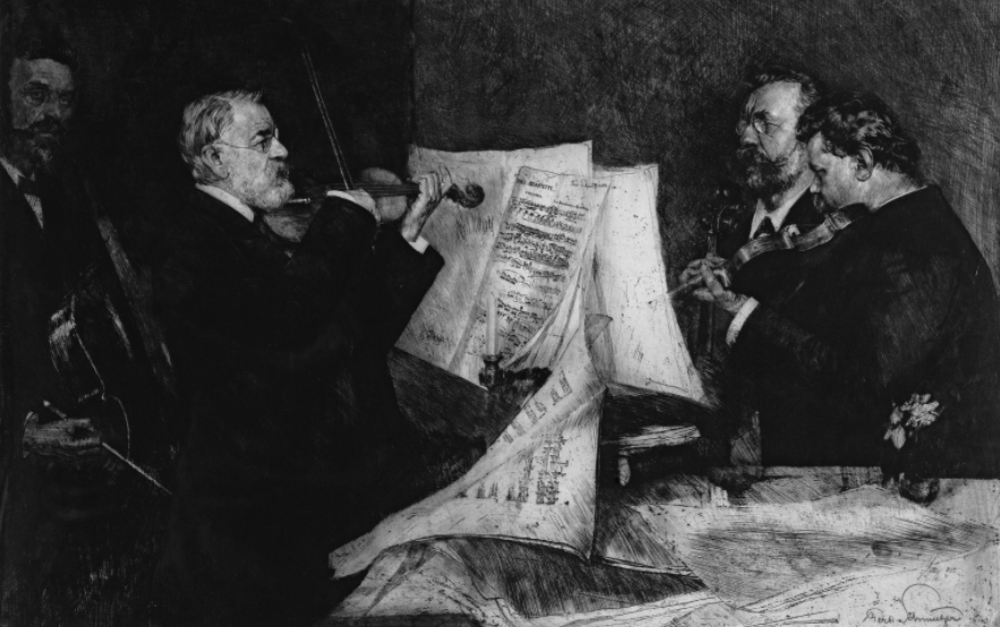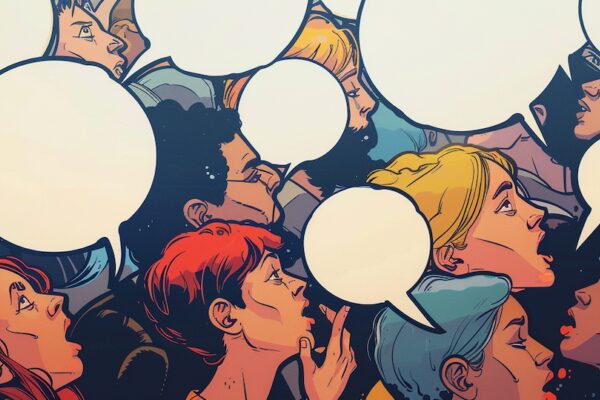
In my post “The Zen of Work: Making Each Moment Count,” I looked at the way that effectiveness within episodes of solo work drives productivity. By framing an episode, visualizing the path forward, working through the task both by getting immersed and taking time to “step above” the level of the work, and thoughtfully completing the episode, a rhythm forms that keeps the work connected to the larger picture while still encouraging deep focus on the task at hand.
A similar model for shaping each episode at work applies to meetings. No two meetings are alike, but this series of steps can be adapted to a range of contexts.
1. Frame the meeting. A meeting comes to be because the owner of a goal decides that the meeting is the right vehicle to advance the goal. This applies equally to standing meetings and to ad hoc meetings that pull a group together for problem solving or decision making. Therefore, the owner should begin by framing three elements of the meeting:
- Context: “Where we are on the field” of the broader stream of work that has given rise to the meeting
- Objectives. What, specifically, the meeting needs to accomplish
- Roles. Guidance on the specific roles envisioned for different individuals participating in the meeting
As an example, let’s use an imagined meeting from our team, in the context of a large, complex project (this example is adapted from a composite of real situations, but doesn’t reflect any specific partnership). This meeting is brought together by the project owner, Shanti, and includes Niko, who only touches the work occasionally and whose input is needed on a specific business partnership under development. This partnership is owned by Tiffany, who is a member the project team. The framing from Shanti might go something like the following:
- Context: We’ve recently had our team meeting to review all the different streams of work in the project, and are largely in a solid place. There are a few “yellows and reds,” known problems we’ve been working through for a while.
- Objectives: One of the important areas to improve is the XYZ Partnership. We’ve been working for some time to raise the level of sponsorship and frame the relationship in a more strategic way. We have our next conversation with them early next week.
- Roles: I’d like Tiffany to use this meeting to get our shared thinking about how to position that meeting for success, and would like to make sure that Niko is aligned with how we’re thinking about success for the partnership, what’s non-negotiable vs. what we’re willing to flex on if we have to.
This relatively brief framing establishes a shared understanding of context, what’s in focus for the meeting and why, and what the collective work really is (e.g., aligning with Niko on how the meeting at XYZCo will be positioned, otherwise simply idea generation and advice that the team conducting the XYZCo meeting can build upon).
Before the group is “off to the races,” it’s a good idea to pause to see if there are different ideas about the purpose of the meeting. For instance, in this situation, Niko might ask for a summary of the “yellow and red” streams, at which point Shanti could add that to the agenda, or simply suggest that he review notes from the project review meeting where they were discussed in detail, so that the meeting can stay focused on the original agenda.
2. Establish a quick shared visualization for the meeting ahead. Just as it is valuable to visualize a mental map for an episode of individual work, building a shared visualization of how a meeting will unfold can help a group navigate a meeting well. Usually it makes most sense for the owner of each major topic to share a visualization for their part of the meeting as it begins. At times, it can also make sense for the group as a whole to co-construct a picture of how to proceed. For example, a team that is concerned about a dynamic with critical individuals at a client might visualize together the best way to approach the problem as a group before diving in, to avoid getting stuck just rehashing their concerns or frustrations.
In the example above, while Shanti framed the meeting as the overall project leader, it likely falls to Tiffany as the leader of the partnership to offer her visualization of the discussion ahead (which is the main agenda item for the overall meeting). An effective visualization in a context like this could be something like:
As I see it, there are really two parts to this conversation. First, let’s make sure we’re aligned on our higher-level objectives for this partnership – goals, non-negotiables, and time frame to get to a resolution. I’ll lay out my understanding, but everyone on the team should feel free to probe and debate. We’d then like to get Niko’s view and make sure we’re aligned. The second conversation is more tactical: how to manage this upcoming meeting with the partner. I think parts of the game plan are clear, but there are a couple of places where I’m not sure we have good enough ideas yet. I’d like to spend the bulk of our time in brainstorming mode, sourcing ideas from the team to improve our thinking. We don’t need to make a decision in this part of the meeting, but your advice will be very useful to Shanti and me as we prepare for the meeting.
Part of what’s good about this visualization is that it makes roles clear, and helps participants know what kind of discussion to have when. In the first part of the meeting, a decision will be made about objectives and boundaries, and that decision will be proposed by Tiffany and made by Niko. Anyone else in the meeting might still contribute, but they’ll be clear whose decision they are advising. In the second part of the meeting, there’s no decision to be made, and the team members should all be prepared to participate as peers, in a more fluid way.
3. Explicitly navigate between the dialogue visualized, and reflection that steps above. If the meeting owner has a good visualization, much of the participants’ attention and intellectual energy should be channeled inside the visualization, doing the work that’s been laid out up front. At the same time, it is valuable for participants in the meeting to periodically step above the discussion in the meeting to reflect on questions like:
- Is the visualization working: are people engaging as envisioned, and will this engagement achieve the meeting’s goals?
- Are issues and gaps coming to light that might stand in the way of achieving important goals: the goals of the meeting (e.g., making a certain decision well), the goals of the stream of work that’s being discussed (e.g., in this example, successful formation of the partnership), or broader goals beyond the stream at hand? Are new opportunities surfacing?
- Are there other learnings that it is important to note, share or take action on?
In our example, for instance, a junior member of the team might perceive that Tiffany and Niko are talking past each other on an important point, and perhaps that this “talking past” reflects a broader issue, like Niko holding an out-of-date picture of realities on the ground. Or she might observe that Shanti seems to be taking too active a role and not letting Tiffany, the team member shaping the business partnership, act as an owner. These reflections could be important, and each is in some sense “above” (or “to the side of”) the play on the field as the team engages in the discussion the stream owner has visualized.
Part of the art of engaging well in meetings is separating out having the reflection with the question of what to do with the reflection. Ask yourself: does the reflection advance the critical path of the discussion, or does it pull the group from a less valuable discussion to a far more valuable one? Is the reflection better shared in another context? If the reflection doesn’t initially “stick,” is the right path to sit back or to press more aggressively?
There aren’t, of course, universal answers to these questions, but simply asking them thoughtfully of oneself significantly increases the odds of choosing well. If the topic of a meeting is difficult and not routine, it is often helpful for the owner to pause from time to time and make space for divergent reflections. Based on these reflections, she can decide either to alter the visualization on the basis of the reflections shared, or to proceed as planned. If participants come to feel that they’re “having the wrong meeting,” they should say so and propose a change of course – but this should be explicit, so there’s a clear decision to address a different goal, visualize a different path to the same goal, or hear the challenge but continue as planned.
4. Synthesize conclusions and implications. Just as a frame orients everyone as a meeting opens, a good synthesis of conclusions and implications orients everyone as a meeting closes. Sometimes this may be as simple as “we’ve decided X, and now Y person will do Z.” After a complex, high-stakes discussion, it may be useful to summarize in the form of a narrative that gives everyone a clear shared view of the group’s collective thought process. Even when a meeting doesn’t reach an intended decision, one can create effective closure by confirming where on the field we’re ending, and what this means for what comes next. For instance, in a deliberation regarding a recruiting decision: “Before we can make the decision on this candidate, it’s become clear that we need to learn more about this aspect of how she’s performed in her last couple of jobs. Christina will figure out the right way to gather insights about her performance, at which point a smaller group can use that input to make the final call.”
Closing meetings well ensures alignment, both through clear articulation of conclusions and implications and through verification that the relevant people are on the same page. This is particularly important in situations where there’s disagreement about the right decision to make, and where participants may need to “disagree and commit” to the decision made.
5. Reflect. After closing the body of the meeting, it is often valuable to have at least a moment – and sometimes much longer – to reflect. Useful areas of reflection include the process of the meeting itself, the larger scenario of which the meeting is part (e.g., the work leading up to it, the nature of the path ahead), feedback for individuals, and broader patterns relating to the topics that have been discussed.
Space to reflect is maintained by having a discipline of accomplishing the work of the meeting in the time required, rather than letting the work expand to fill the time available. Raising the ratio of time spent learning from the work to time spent just pushing through the doing will increased a team’s rate of improvement – and few things matter as much as how broadly and how rapidly teams improve in this way.
All of these disciplines can be internalized to the point where they’re second nature. Like any skill worth mastering, these steps take a lot of mental energy at the beginning. Remember that this is mental energy focused on what’s in fact most important about the meeting: what is it for, how can it be positioned for success, is it actually working, etc.?
Nearly everyone could perform better by having fewer, better meetings, and reallocating some of the time that otherwise might be spent in conference rooms mentally preparing to spend time in meetings well.
One predictable outcome of a disciplined approach is that higher mental effort corresponds to significant time savings: freeing up time within meetings spent away from the critical path of what needs to be discussed, freeing up time that individuals spend doing work that wouldn’t be needed if the right issues were discussed in the right way “in the room,” and freeing up time from meetings that aren’t needed once the right discussions reach closure. The lift in performance this represents is perhaps only outweighed by the positive lift in what work feels like on teams where meetings consistently discuss the real issues and only the real issues.



